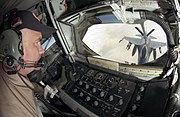Rail and broadband in place of second Sydney airport
The Federal and New South Wales Governments are to conduct a joint study of options for additional airport capacity for Sydney. This follows a "National Aviation Policy White Paper" (16 December 2009). It should be noted that the paper is not just talking about an airport and mentions rail transport systems. I suggest that the study should look at a train in place of a second Sydney airport. A very high speed train from Sydney, through Canberra, to Melbourne would replace about 75% of flights on one of the worlds busiest air corridors. Provision of wireless broadband on the train would allow the passengers to do useful work and be entertained. In addition to passengers, a high speed train can also carry high high value freight, such as priority mail, currently sent by air.
Sydney airport already has two underground stations in place and a direct underground line to the Sydney CBD. Work would be needed on the rail corridor out of Sydney, but this is relatively minor, with work already underway for a rail freight corridor.
Very fast trains are now a proven technology, with China and Korea mass producing adaptions of proven European designs.
The cost of the line from Sydney to Melbourne could be covered by the sale of land in new greenfield environmentally efficient towns in inland Australia. These towns would also reduce the growth pressure on Sydney (politically the new towns would be attractive to the current NSW and Federal governments as it would shift the voting trends to the ALP in previously conservative rural electorates). Integration of the National Broadband Network in the new towns would allow rapid provision of services and jobs to the new towns and reduce the cost of infrastructure.
New towns could be built along the VFT route incorporating high environmental and planning standards. Buildings could be designed to use the minimum of water and power, then assembled from mass produced modules. Homes could be designed to accommodate the elderly. Broadband could bring jobs, education and services to the towns quickly. Both government and commercial telecommuting offices could be provided allowing office works to telecommute most days and perhaps have to catch the train only once every few weeks. Each town could have a university campus, as well as a hospital with advanced medical facilities, linked by broadband to specalists.
The pressure on Sydney airport will also be reduced in coming years due to changes in the aircraft used and environmental pressures. The introduction of larger aircraft, specifically the Airbus A380, will reduce the number of international aircraft movements needed. Added to this the Boeing 787 (and Airbus A350) will allow more direct international flights from other Australian airports, reducing the need for Sydney to act as a hub. Added to this, the need for reduction in greenhouse gas emissions will increase pressure on airlines to have aircraft loaded to capacity to increase fuel efficiency. The requirement for passengers to pay the environmental cost of their travel will also dampen demand for flights.
Sydney is Australia’s biggest and busiest city and Sydney’s Kingsford Smith Airport is Australia’s busiest airport, with over 32 million passengers in 2008–09. To ensure the future aviation needs of Sydney meet the expectations of the community and are fully integrated into long-term growth strategies, the Government, in partnership with the New South Wales Government, will work together to plan for the Sydney region’s future airport infrastructure, including how it links to Sydney’s growth centres and its road and rail transport systems. This is the first time that the two governments are aligning their planning and investment strategies. ...
From: National Aviation Policy White Paper, Department of Infrastructure,Transport, Regional Development and Local Government, 16 December 2009
Labels: aircraft, Canberra, high speed train, land planning, National Broadband Network, NBN, Public Transport, Sydney, Train










